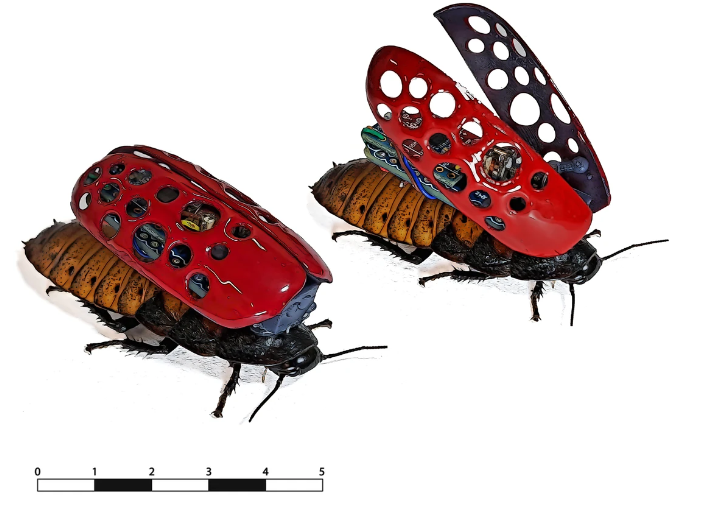Cyborg insects can navigate complex terrains, offering potential in search and rescue operations. The Madagascar hissing cockroach is a common choice for cyborg insect research due to its adaptability and payload capacity. However, adding electronic components can disrupt its natural motion, particularly when the payload shifts its center of mass, causing the insect to fall.

Inspired by the self-righting ability of the ladybird beetle, researchers from Japan and Singapore have designed a 3D printed artificial limb to aid cyborg insects in righting themselves. Ladybirds use their robust elytra to push off the ground and roll back onto their feet, a mechanism mimicked in the design of the artificial limb. This limb integrates sensors, control logic, and power storage within a curved shell, which helps distribute impact forces and prevents damage.
The artificial limb was fabricated using Digital Light Processing (DLP) 3D printing technology. The curvature of the limb’s shell was optimized through multiple design iterations to ensure both flexibility and strength.
Experiments demonstrated that the artificial wing significantly improves self-righting performance. The design allows for a wider tilting angle, up to 150°, enabling the insect to recover from various inclinations. In contrast, simpler designs failed to provide consistent recovery.
The artificial limb’s compact mode facilitates movement in tight spaces, while the expanded mode assists in self-righting. This technology enhances the insect’s ability to navigate and recover in disaster scenarios, ensuring continuous operation and effective reconnaissance.
You can read the full paper, titled “Cyborg insect repeatable self-righting locomotion assistance using bio-inspired 3D printed artificial limb” at this link.

